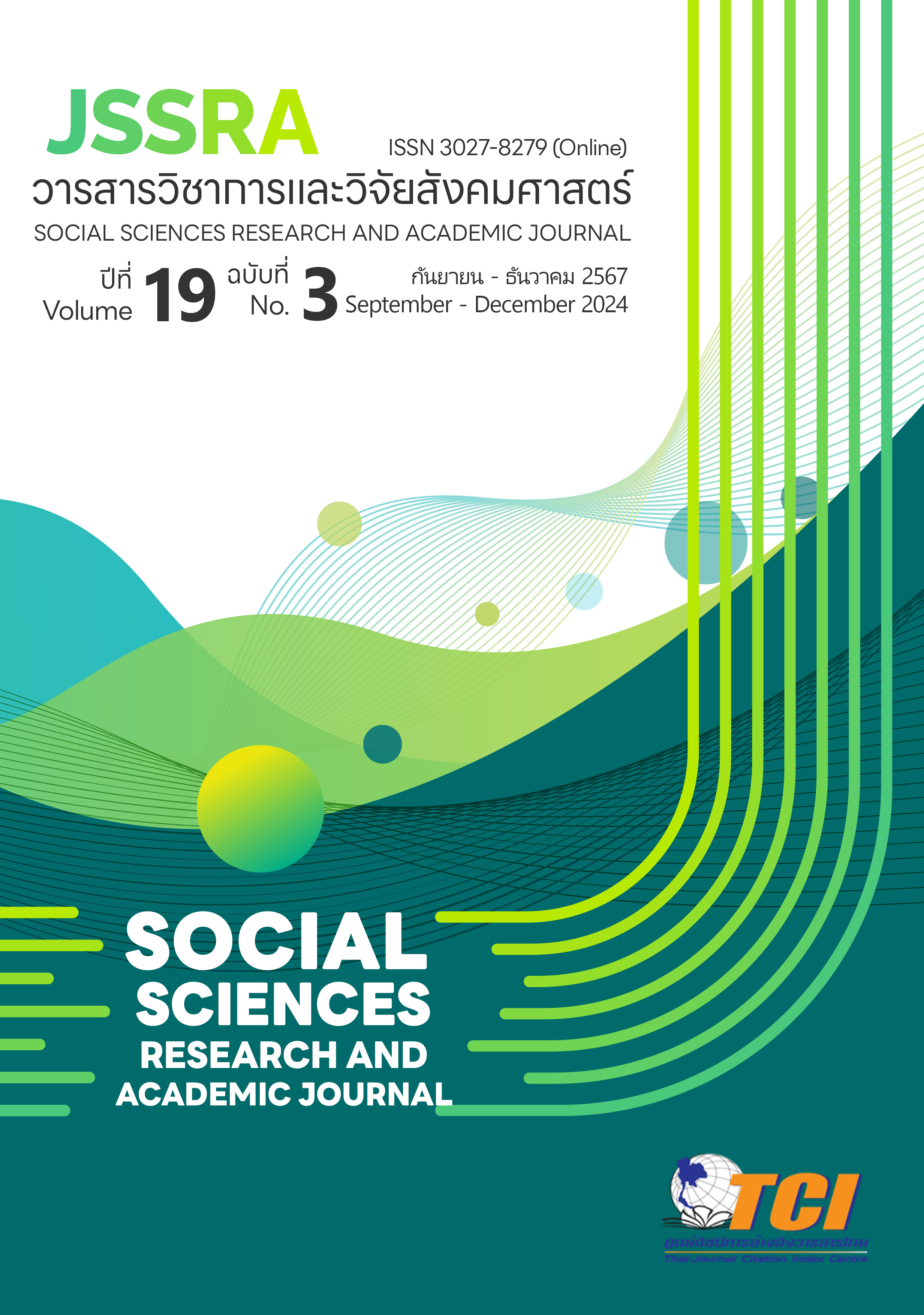The Development of Corruption Risk Management Model for the Ministry of Tourism and Sports
Main Article Content
Abstract
The purposes of this research were to 1) study the corruption risk management process, 2) identify factors affecting the success of the implementation of the corruption risk management policy, and 3) develop a corruption risk management model of the Ministry of Tourism and Sports. Qualitative research methods were used with 15 in - depth interviews and 15 focus group discussions, including 30 key informants.
The research results was found that 1) The corruption risk management process of the Ministry of Tourism and Sports should develop a corruption risk management process throughout the organization according to the PDCA (Plan - Do - Check - Act) cycle. 2) Leadership and cooperation were the most critical factors for successful implementation of the corruption risk management policy. Efficiency in planning and control as well as the creation of solidarity or continuity were secondary important factors. 3) There are three model of corruption risk management development as follows: 1) Corruption risk management targeting actions by individuals acting alone often resulting from a weak internal control system. Management of corruption risks By applying the principles of internal control of the COSO (2013) standard, 2) Corruption risk management addressing actions involving both parties including both the giver and the receiver. Management of corruption risks by applying the principles of the ISO 37001 standard as a tool for managing and resisting giving and receiving bribes, and 3) Corruption risk management addressing policy - level projects and the administration of the Thai Tourism Promotion Fund.
Article Details
References
Chanthasorn, W. (2022). Theory of Public Policy Implementation (8). Bangkok: Prik Wan Graphic.
Fauzi, R. Supangkat, S. & Lubis, M. (2018). The PDCA Cycle of ISO/IEC 27005:2008 Maturity Assessment Framework. Retrieved July 4, 2024, from https://www.researchgate.net/publication/326554343_The_PDCA_Cycle_of_ISOIEC_270052008_Maturity_Assessment_Framework
Ibrahim, B. Robey,T. & Wahyudi, H. (2019). Innovation in Corruption Risk Mapping using a Value Chain Map and Its Application in the Upstream Oil and Gas Industry in Indonesia. Retrieved July 4, 2024, from https://www.researchgate.net/publication/345099212_Innovation_in_Corruption_Risk_Mapping_using_a_Value_Chain_Map_and_Its_Application_in_the_Upstream_Oil_and_Gas_Industry_in_Indonesia.
Jaigla1, K. & Yarana, C. (2020). A Study of fraudulent scheme warning signs: A case study on the Agriculture Cooperative in the Cooperative Auditing Office Region 1. Journal of Lampang Rajabhat University, 9(1), 12-25. (In Thai).
Kopanchuk, V., Kravchuk, O., Torichnyi, V., Metil, A., Kurtsev, O. & Kopanchuk, O. (2021). Anti-Corruption Tools of Financial Risk Management in Public Administration. International Journal of Innovative Research and Scientific Studies, 4(4), 269-277.
Malayaphan, R. (n.d.). Application of the System Approach (Process Approach) to the Operation to Comply with ISO 37001:2016 Requirements. Retrieved August 11, 2024, from https://www.pact.network/2018/06/process-approach-iso-370012016.html.
Myint, U. (2000). Corruption: Causes, Consequences and Cures. Asia-Pacific Development Journal, 7(2), 35-36.
Office of the National Anti-Corruption Commission. (2023). Report on the Corruption Situation in Thailand, Fiscal Year 2022. Retrieved July 4, 2024, from https://www.nacc.go.th/categorydetail/2018083118464593/20230421101629?
Office of the National Economic and Social Development Board. (2023). Master Plan under the National Strategy (2023-2037) (Revised Edition) Issue (21) Anti-Corruption and Misconduct. Retrieved July 4, 2024, from http://nscr.nesdc.go.th/wpcontent/uploads/2024/07/ns-document-03072567.pdf
Office of the Public Sector Anti-Corruption Commission. (2024). Report on the Analysis of the Corruption Perception Index for the Year 2023. Nonthaburi: Author.
Public Safety Canada. (2022). Definitions of Corruption - Research Brief no. 48. Retrieved July 4, 2024, from https://www.publicsafety.gc.ca/CNT/RSRCS/PBLCTNS/RGNZD-CRM-BRF-48/rgnzd-crm-brf-48-en.pdf
Sirilert, P. (2024). World Happiness Report 2024 Thailand Moves Up to 58th place, ‘The Happiest Country’ – Finland Holds the Top Spot for the 7th Consecutive Year. Retrieved on June 30, 2024, from https://www.sdgmove.com/2024/03/20/world-happiness-report-2024/
The Shire of Northam Community Safety and Crime Prevention (CSCP). (2021). Fraud and Corruption Control Plan. Retrieved on June 30, 2024, from https://www.northam.wa.gov.au/documents/11633/fraud-and-corruption-control-plan.
Trisna, K. & Putri, P. (2022). The Implementation of Anti-Bribery Management System Designed to Mitigate the Bribery Risk in State-Owned Enterprises: A Case Study of the Indonesia Agribusiness Industry. In Md Mizanur Rahma (Chair), Conference on Industrial Engineering and Operations Management, Sydney: Australia.
Wongtrakularee, V. and Eiamrattanakul, S. (2016). The Assessment of Key Success Factors of Financial Institution’s Operational Risk Management of financial institutions. Kasetsart Applied Business Journal, 10(13), 1-16.


